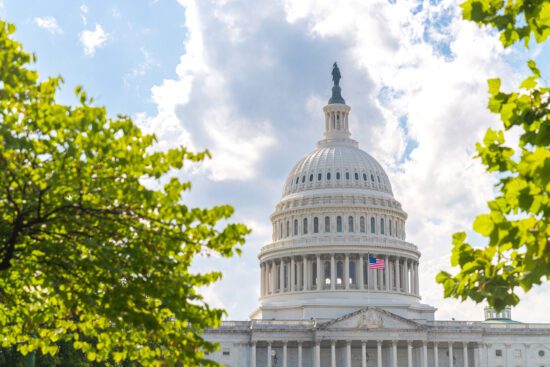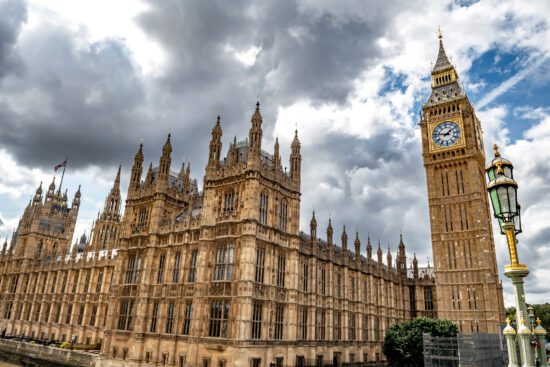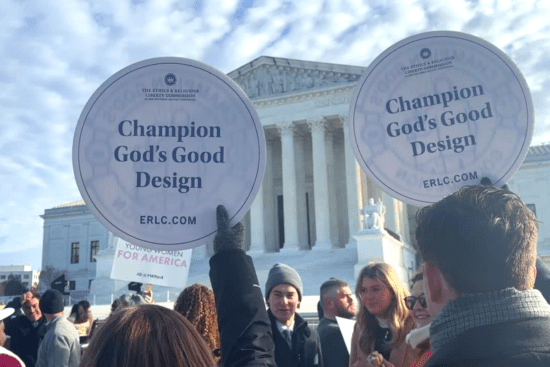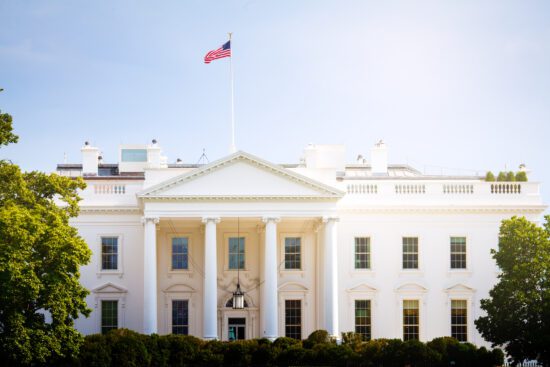As the 2024 elections approach, voters will once again cast ballots for the president and vice president, all 435 members of the House of Representatives, and 34 United States senators. But while these are all federal offices, the process for choosing a president is quite different than for selecting legislators. Understanding these two distinct election systems provides a window into the careful balance the Founding Fathers struck between federalism and popular sovereignty.
During the establishment of the American Republic, the Founders grappled with a pivotal question: how should a nation elect its leaders? This question was more than a mere logistical concern; it was imbued with deep philosophical and ethical implications. The solutions they proposed and enacted have left an indelible mark, shaping the nation’s electoral processes to this day.
At the heart of American democracy lies a unique and intricate electoral system, a blend of direct and indirect democratic processes that governs how leaders are chosen in the U.S. The Electoral College, often a topic of debate and misunderstanding, represents a balance between the popular will and federalist principles, where power is divided between a central (or federal) government and individual states. In contrast, the direct election of legislators embodies the democratic ideal of representation by the people, for the people.
Indirect: The Electoral College and the Presidency
When the U.S. Constitution was being drafted, a primary concern was balancing the power between large and small states and between the federal government and individual states. The Electoral College emerged as a compromise, a hybrid mechanism blending elements of direct popular vote and state-centric representation. It was also a reflection of the era’s skepticism toward direct democracy, which the Founders feared could lead to mob rule and the tyranny of the majority.
This system ensured that each state had a voice in presidential elections proportional to its representation in Congress, yet it also incorporated the people’s will through the popular vote in each state. It’s a system uniquely American, deeply rooted in the Federalist ideals that sought to balance diverse interests across a vast and varied nation.
When Americans head to the polls to vote for a presidential candidate, they are casting their ballots not directly for a presidential candidate but for the slate of electors who will represent their state in the Electoral College. This is known as the popular vote.
Each state is allocated electors equal to its total number of senators and representatives in Congress. This number varies based on the state’s population. California has the most with 54 electoral votes. Five states (Alaska, Delaware, North Dakota, South Dakota, Wyoming) and the District of Columbia are tied for the least, with three each.
Based on the popular vote, each state (except Nebraska and Maine, which have a proportional system) follows a “winner-takes-all” approach, where the candidate who wins the majority of the popular vote in the state wins all of that state’s electoral votes. This indirect election process means that a candidate can win the presidency while losing the national popular vote, which has occurred fives times in U.S. history—most recently in 2000 and 2016. It happens when a candidate racks up narrow victories in several high-population states while losing by wider margins in the rest of the country.
In December, after the general election, the chosen electors, typically loyal party members selected by state party committees, meet in their respective state capitals after the election to cast the official ballots for president. In most states, these electors are pledged to vote for whichever candidate won the popular vote in that state, though there have been rare instances of “faithless electors” breaking that pledge. The electors cast a vote for president and one for vice president. These votes are then sent to the president of the Senate (the current vice president of the U.S.).
Additionally, the ceremonial role of Congress in counting and certifying these votes is a crucial final step, highlighted in historical instances such as the 2000 and 2016 elections. In a joint session of Congress in January, the electoral votes are counted. The president of the Senate presides over the session and announces the results.
To win the presidency, a candidate must receive a majority of electoral votes. Currently, this means at least 270 out of 538 total electoral votes. If no candidate receives a majority, the decision goes to the House of Representatives, with each state delegation having one vote to determine the president, while the Senate elects the vice president.
This process is defined by the U.S. Constitution and further refined by federal and state laws. One major change in the process occurred in December 2022. At that time, Congress passed the Electoral Count Reform Act to overhaul the 1887 Electoral Count Act, which governs the process of appointing presidential electors and counting their votes. Under this act, if the number of electoral votes cast is reduced, such as in cases where Congress votes to not count a slate of electors, the number of votes needed to win also decreases. For example, if Congress discards 30 electoral votes, the total number of votes cast drops to 508, and the number of votes needed to win drops to 245. This reduces the incentive for supporters of a losing candidate within Congress to try to throw out electoral votes so that they can select the president.
Direct: Elections for Legislators
In the realm of legislative elections, the U.S. embraces a more straightforward and directly democratic approach compared to the more indirect Electoral College. Legislative races use a first-past-the-post system in single-member districts, meaning the candidate with the most votes wins even if they fall short of a majority.
The election of senators and representatives reflects the core democratic principle of representation by and for the people, though within a carefully crafted constitutional framework.
The House of Representatives, often referred to as “the people’s house,” is the most directly responsive to the American electorate. Members of the House are elected every two years, ensuring they remain closely attuned to the shifting sentiments of their constituents. Each representative serves a specific congressional district, and their number in the House is determined by the population of each state, providing a proportionate representation of the diverse demography of the nation.
This process, however, is not without its complexities. Redistricting–the act of redrawing district boundaries, usually every 10 years following the census–has significant political implications. Gerrymandering, the manipulation of these boundaries for partisan advantage, is a critical issue that shapes the House’s composition and, by extension, the legislative agenda.
Initially, U.S. senators were not elected directly by the people but were chosen by state legislatures. This approach reflected the Founders’ desire to insulate the Senate from the swings of public opinion, ensuring that it would act as a stabilizing force in government, representing the states’ interests. However, as the call for more democratic representation grew, the 17th Amendment, ratified in 1913, marked a significant shift, mandating the direct election of senators. This change brought the Senate closer to the people, aligning it more closely with the democratic ethos that increasingly defined the American political landscape.
Senators serve six-year terms, with elections staggered so that approximately one-third of the Senate is up for election every two years. This design ensures that the Senate, unlike the House, isn’t completely overhauled in any single election, maintaining a level of continuity and stability in the legislative process.
Senators represent their entire state, a role that inherently comes with broader responsibilities and a wider array of interests to consider. This statewide representation contrasts with the more localized focus of House members, creating a dynamic interplay between local and statewide priorities within Congress.
Elections for the House and the Senate are integral to the balance of power in the U.S. government. Midterm elections, occurring halfway through a president’s term, can dramatically shift this balance, often serving as a referendum on the sitting president’s performance. The outcomes of these elections shape legislative priorities, influence policymaking, and can either bolster or challenge the president’s agenda.
Before the general election, candidates for Congress must first navigate the primary (or caucus) process within their party. These primaries and caucuses determine who will represent the party in the general election. They vary significantly between states and between parties, with some opting for closed primaries (where only registered party members can vote) and others for open primaries (where any registered voter can participate).
Direct elections of legislators has become a key pillar of American democracy.
Direct elections of legislators has become a key pillar of American democracy, ensuring that the voice of the people is heard and represented in the legislative process. While the system is not without its challenges, it remains a vital mechanism for the expression of the democratic will and for holding elected officials accountable to those they serve.
Two Approaches, One Duty
Understanding the intricacies of the U.S. electoral system can be helpful in understanding the approaches taken by politicians. For instance, both systems profoundly shape political campaign strategies. Presidential candidates tailor their campaigns to the Electoral College map, focusing on swing states. In contrast, congressional candidates concentrate on local and state issues relevant to their direct electorate. This difference in focus can lead to varied governance styles and priorities, influencing national policy outcomes.
Ultimately, the indirect method of the Electoral College and the direct election of legislators each play a vital role in ensuring diverse regional and popular interests are represented in the American government.
As participants in this system, we have a singular duty as Christians to not only understand these processes but to engage with them in a way that represents our faith commitments.
The biblical principles of stewardship and justice, for example, call us to be informed and moral citizens, recognizing that our involvement in the electoral process is an expression of our commitment to the community and the greater good. Whether voting for a local representative or indirectly for a president, each ballot cast is a profound exercise of our rights, our responsibilities, and our vision for America.
Glossary
- Absentee Ballot: A voting method allowing a person to mail in their vote instead of voting in person at a polling place, often used by those unable to physically be present on Election Day.
- Battleground State: A state where the electoral outcome is uncertain and both major political parties have a strong chance of winning. These states are often the focus of campaign efforts.
- Blue State/Red State: Terms used to denote states that predominantly vote for the Democratic Party (Blue) or the Republican Party (Red).
- Canvassing:The act of soliciting votes or gathering information about voters’ opinions, typically conducted by going door-to-door or through phone calls.
- Exit Poll: A survey taken immediately after voters have exited the polling stations. It aims to predict the outcome of an election before the official count is available.
- Gerrymandering: The practice of manipulating the boundaries of electoral constituencies to favor one party or class, often resulting in oddly shaped districts.
- Jungle Primary: A primary election where all candidates for elected office run in the same primary regardless of political party. Also known as a “nonpartisan blanket primary.”
- Landslide: An election in which the victorious candidate or party wins by an overwhelming margin.
- Political Action Committee (PAC): An organization that raises money privately to influence elections or legislation, especially at the federal level.
- Referendum: A direct vote by the electorate on a particular proposal or issue, which could be a law, policy decision, or constitutional amendment.
- Robocall: An automated telephone call that delivers a recorded message, used by political campaigns and telemarketers.
- Spoiler Effect: The impact a minor party candidate can have on an election by taking votes away from a major candidate with similar ideologies, potentially causing a rival candidate to win.
- Stump Speech: A standard speech used by a political candidate during a campaign, often repeating core messages and themes.
- Super PAC (Super Political Action Committee): A type of independent political action committee which may raise unlimited sums of money from corporations, unions, and individuals but is not permitted to contribute directly to parties or candidates.
- Swing State: A state in which no single candidate or party has overwhelming support in securing that state’s electoral college votes, making it a target for heavy campaigning.
- Voter Suppression: Any legal or extralegal measures or strategies used to prevent eligible voters from exercising their right to vote.
- Whistlestop: A political campaign strategy in which the candidate makes a series of brief appearances or speeches at a number of small towns over a short period of time.









